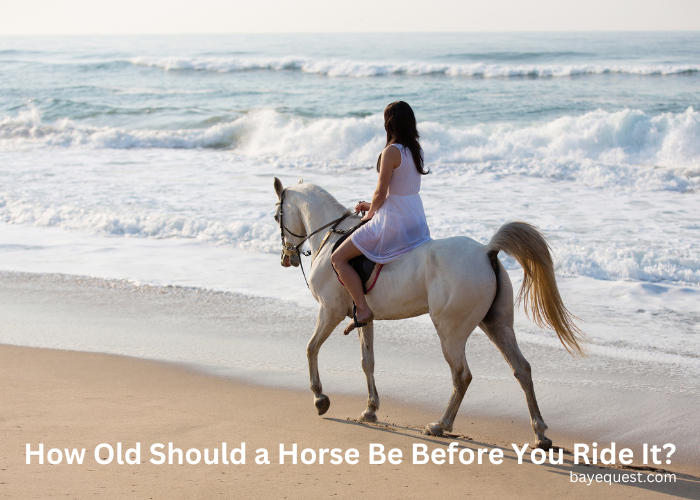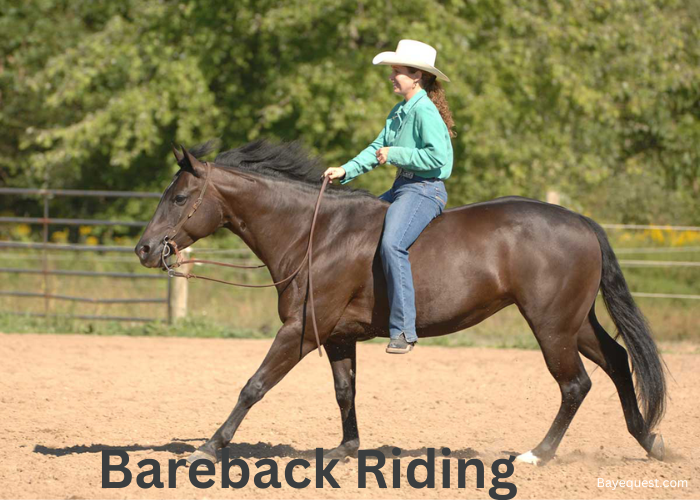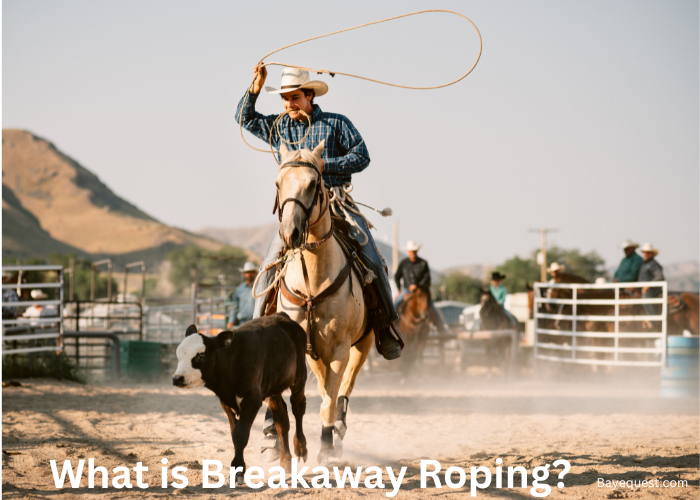How do you know when your horse is ready to be ridden? Timing is everything when it comes to a horse’s development.
Riding too soon can cause long-term damage, while waiting for the right moment ensures a healthy, strong partner for years to come.
Whether you’re training a young horse or preparing for your first ride, knowing the proper age is crucial.
Let’s dive into what you need to consider before saddling up, from physical maturity to mental readiness.
Patience pays off when it comes to your horse’s well-being.
How Old Should a Horse Be Before You Ride It? Key Takeaway
The ideal age to start riding a horse is between 2 and 4 years old, depending on the breed and physical maturity. Starting too early can cause joint and muscle damage. Waiting for proper development ensures a healthier, longer riding career. Consult a vet or trainer for guidance.
What is the Ideal Age to Start Riding a Horse?
The ideal age to start riding a horse is between 2 and 4 years old.
This age range allows time for the horse’s bones, joints, and muscles to develop enough to carry a rider safely.
However, the exact timing depends on the horse’s breed, size, and individual growth rate.
Larger breeds, like warmbloods, may need extra time to fully mature, while smaller breeds might be ready sooner.
Always ensure the horse is physically and mentally prepared before beginning any riding.
Factors to Consider Before Riding a Horse
Before riding a horse, there are some important factors to consider to ensure the horse’s health and readiness. These are:
Physical maturity
Ths is the most critical factor. A horse’s bones, muscles, and joints need to be fully developed before carrying a rider.
Starting too early can damage their joints and cause long-term issues like arthritis.
Every horse grows at its own pace, so waiting for their body to mature is crucial.
Breed and size
Larger breeds, such as draft horses or warmbloods, tend to mature slower and may need more time.
These horses might not be ready until they are 4 or 5 years old.
On the other hand, smaller breeds and ponies often mature faster and could be ready between 2 and 3 years old.
Mental readiness
It’s not just about physical growth—mental readiness is equally important.
A horse should be calm, focused, and have a solid foundation in basic commands before riding begins.
Groundwork training helps prepare the horse mentally and ensures they can handle the new experiences that come with riding.
Verterinarian’s assessment
Before starting to ride, it’s essential to get a veterinarian’s assessment.
Regular vet checkups help confirm that the horse is healthy and capable of starting this new phase of training.
This also helps catch any potential health problems that could worsen with riding.
Pre-riding groundwork
This is necessary to build strength and balance in the horse. Exercises like lunging or long-lining help prepare the horse for carrying a rider.
Introducing a saddle early on can also make the transition smoother and less stressful.
Risks of Premature Riding
Here are the risks of premature riding:
Joint damage
A horse’s joints, particularly in the legs and spine, take time to fully develop.
Premature riding places too much strain on these joints, which can lead to long-term problems like arthritis or lameness.
Once damaged, joints rarely heal completely, impacting the horse’s movement and comfort throughout its life.
Back and spine problems
The horse’s spine is still growing and developing at a young age.
Introducing weight too soon can cause misalignment, chronic pain, or spinal injuries.
This can lead to lifelong issues that may limit the horse’s ability to be ridden or perform in other activities.
Muscle strain
Without proper muscle development, a young horse is unable to support the weight of a rider effectively.
Premature riding can strain muscles, leading to soreness, stiffness, and injury.
The horse may also develop compensatory movement patterns to cope with the strain, leading to additional physical issues.
Stunted physical development
Starting to ride a horse too early can interfere with its natural growth.
The stress of carrying weight before the horse’s body is fully matured may stunt its overall development.
This may result in a weaker, less physically capable horse in adulthood.
Behavioral issues
A young horse may not be mentally ready for the stress and responsibility of being ridden.
Premature riding can create anxiety, frustration, or fear, leading to behavioral issues such as bucking, rearing, or becoming difficult to handle.
This can make the horse harder to train and less enjoyable to ride in the long term.
Reduced lifespan of riding career
Riding too early can shorten the overall lifespan of a horse’s riding career.
Physical issues that arise from premature riding often lead to early retirement. A healthy start ensures a longer, more productive life under saddle.
Increased risk of injury
Immature horses are more prone to injury because their bodies are still developing.
Premature riding can lead to injuries ranging from pulled muscles to severe tendon or ligament damage.
This may in turn require extensive recovery time or, in some cases, permanent disability.
Interesting read: Can You Ride a Horse While Intoxicated?
How to Prepare a Young Horse for Riding
Preparing a young horse for riding is a gradual process that involves physical conditioning, mental training, and proper handling.
Here’s how to do it:
Start with groundwork
Groundwork is the foundation for all future training. Teach the horse to respond to basic commands such as leading, stopping, and backing up.
Lunging is a great exercise that helps the horse understand voice commands and establishes respect between the horse and handler.
Groundwork helps build muscle, balance, and coordination while introducing the horse to basic cues.
Introduce the saddle slowly
Before mounting, the horse needs to get used to the feel of a saddle. Start by placing a saddle pad on their back, followed by a light saddle.
Secure the saddle loosely at first, allowing the horse to move around and adjust to the sensation.
Gradually tighten the girth as the horse becomes more comfortable.
This slow introduction prevents the horse from becoming frightened or reactive when they feel the saddle for the first time.
Desensitize the horse
A young horse should be desensitized to various stimuli they will encounter while riding, such as noises, touch, and movement.
Use objects like ropes, plastic bags, or your hand to gently touch different parts of the horse’s body, including the legs, belly, and back.
This helps them become less reactive to new sensations.
Introduce weight gradually
After the horse is comfortable with the saddle, start introducing weight.
Begin by applying light pressure to the saddle, such as leaning on it with your hands or placing small bags of weight.
Gradually increase the pressure to mimic a rider’s weight.
This helps the horse adjust to carrying weight without overwhelming them, making the eventual transition to a rider smoother.
Practice Leading with tack
Lead the horse while they are wearing the saddle and bridle, letting them get used to moving with the tack on.
You can also use long-lining to simulate steering and stopping while the horse walks in a controlled environment.
This helps the horse understand how to balance and respond to the tack without the added pressure of carrying a rider.
Introduce a rider gently
When the horse is ready, introduce a rider for short, easy sessions.
Have a calm and experienced rider mount the horse slowly, sitting lightly and avoiding any sudden movements.
Initially, keep the rides short and in a controlled environment. Allow the horse to become comfortable with carrying a rider.
Monitor the horse’s progress
Throughout the process, keep an eye on the horse’s behavior and physical condition. Look for signs of discomfort, such as stiffness or reluctance to move.
If the horse shows any signs of stress or physical strain, take a step back and allow more time for training or conditioning.
Read also: Can You Ride a Zebra?
Can You Ride a Miniature Horse?
Yes, you can ride a miniature horse, but only if the rider is small and light.
Miniature horses can only carry about 20% of their body weight, so they are suitable for young children.
Adults and older kids are usually too heavy, which can cause injury to the horse.
Instead of riding, miniature horses can be trained to pull carts or participate in groundwork and agility activities.
These alternatives keep them active without the risk of strain.
For most people, working with miniature horses on the ground is a safer and healthier option for the horse.
Conclusion
In the end, patience is the best thing you can offer your young horse.
Waiting until they are physically and mentally ready ensures a longer, healthier riding career.
Starting too early can cause long-term damage that’s hard to fix.
By considering your horse’s breed, size, and overall development, you’re setting them up for success.
Consult with a vet or trainer to make sure you’re on the right track.
Remember, a little extra time now can lead to years of enjoyable rides in the future. A healthy horse is a happy horse.








